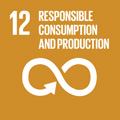- Docente: Giuseppe Sarli
- Credits: 8
- SSD: VET/03
- Language: Italian
- Moduli: Giuseppe Sarli (Modulo 1) Gianfranco Militerno (Modulo 2) Fabio Ostanello (Modulo 3) Roberta Galuppi (Modulo 4) Luca Sardi (Modulo 5)
- Teaching Mode: In-person learning (entirely or partially) (Modulo 1); In-person learning (entirely or partially) (Modulo 2); In-person learning (entirely or partially) (Modulo 3); In-person learning (entirely or partially) (Modulo 4); In-person learning (entirely or partially) (Modulo 5)
- Campus: Bologna
- Corso: Single cycle degree programme (LMCU) in Veterinary Medicine (cod. 8617)
-
from May 26, 2025 to Jun 04, 2025
-
from May 26, 2025 to May 28, 2025
-
from May 26, 2025 to May 30, 2025
-
from May 28, 2025 to Jun 03, 2025
-
from May 26, 2025 to May 29, 2025
Learning outcomes
At the end of the course the student: 1) acquires the knowledge on the livestock health and management of the different types of intensive pig farms (farrow-to-weaning, farrow‐to‐finish, finishing, multisite); 2) he/she is able to identify the main transmissible and non-transmissible pathology present in the farm through an integrated approach of knowledge on environmental and zootechnical risk factors, epidemiology, etiology, pathogenesis, diagnosis; 3) he/she will also be able to plan, implement and evaluate the effectiveness of biosecurity measures and direct and indirect prophylaxis.
Course contents
Module 1 (Giuseppe Sarli) Macroscopic and microscopic pathology and diagnosis and Module 2 (Gianfranco Militerno) Necroscopy
- Identification of the most important pathologies in the farm through the assessment of the environmental, structural and zootechnical risk factors and definition of diagnostic protocols (etiology and diagnosis).
Module 3 (Fabio Ostanello) Biosecurity against bacterial and viral diseases and Module 4 (Roberta Galuppi) Biosecurity against parasitic diseases
- Planning of direct and indirect prophylaxis measures, implementation or improvement of internal and external biosecurity practices.
Module 5 (Luca Sardi) Improvement of livestock management aimed at improving the health
- Planning of zootechnical strategies for limiting the impact of environmental risk factors (temperature, humidity, ventilation, air quality, adaptation of structures, batches management production and pig flow, feeding).
Readings/Bibliography
Diseases of swine. 11th ed., Wiley
De las Heras Guillamòn M., García de Jalón J.A.: Guida alla diagnosi necroscopica in patologia suina, vol.56. Iniziative Zooprofilattiche e Zootecniche - Brescia - 2004, http://www.fondiz.it/
Teaching methods
The course is aimed at fostering a holistic view of the management of communicable diseases in intensive pig farms. Through a proper anamnestic and diagnostic approach, the causes of the main transmissible pathologies and the related risk factors will be identified. Subsequently, health and livestock strategies will be planned to reduce the economic and health impact of the diseases. Finally, the methods for evaluating the results achieved will be implemented.
The course is divided into two phases:
a) Introductory / theoretical phase in which the teachers, through lectures, provide basic concepts relating to the topics of their competence.
b) Practical phase in which students work on a "clinical case" under the supervision of the teachers and for which they have to set the input data (farm type, pathology and diagnostic process) and output data (plan strategies and indicate monitoring results).
Assessment methods
The evaluation of students attending the course will take into account two aspects:
- Result of a written test on the topics covered in the introductory part.
- Critical vision and awareness of the problems faced during the practical phase
Teaching tools
Video projector
Autopsy room
Office hours
See the website of Giuseppe Sarli
See the website of Gianfranco Militerno
See the website of Fabio Ostanello
See the website of Roberta Galuppi
See the website of Luca Sardi
SDGs


This teaching activity contributes to the achievement of the Sustainable Development Goals of the UN 2030 Agenda.
